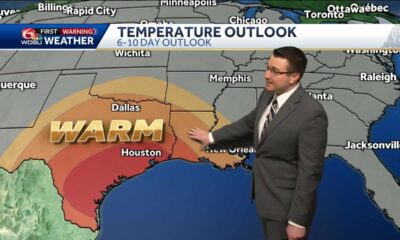(The Center Square) – Hurricane Helene has put a new focus on the health of streams in North Carolina and making sure they are clear of debris such as fallen trees and trash.
When heavy storms hit, clogged streams can cause flooding to farmland, damage to bridges and homes and also make recreation, such as canoeing more difficult.
“A lot our streams across North Carolina typically have not had a typical maintenance type program,” Bryan Evans, executive director of the North Carolina Association of Soil and Water Conservation Districts, told The Center Square.
Fixing the problem will require millions of dollars in federal and state tax dollars, Evans said.
The issue of stream clearing in North Carolina also came to the forefront after hurricanes Florence and Matthew, and the Legislature responded in 2022 with $36 million in funding for the Streamflow Rehabilitation Assistance Program also known as STRAP.
“It is set up to be a maintenance program, a proactive program to keep our streams functioning the way they should, prior to a storm,” Evans said.
When the STRAP program was first funded, soil and water districts throughout the state estimated that they needed $320 million for debris removal and other work.
The Legislature approved a second round of funding last year for $19.3 million and by then the cost of the work needed to be done dropped to around $200 million.
Then, last September, came Helene. The scope of the damage was so large that federal agencies and programs are still in charge of clearing and repairing it.
A federal program, the Emergency Watershed Protection Program, is in charge of stabilizing streams and removing debris, Evans said.
“In these areas where a blockage has happened, a lot of times the water will go around and it starts degrading the streambed and destabilizing the stream banks,” Evans said. “EWP also helps assist with that – they go back and stabilize those banks, especially where there are structure that are threatened because the streambeds are creeping in on them.”
The Federal Emergency Management Agency and the U.S. Army Corps of Engineers are also involved in the Helene recovery effort.
“FEMA comes in and they do some debris removal that is considered an imminent threat,” Evans said.
The agencies are still performing an assessment of the damage in North Carolina. Only after that assessment is complete will the EWP fully kick in.
“Helene has affected so many places at such a level that we’ve not seen before,” said Evans.
State officials are working closely with federal agencies on the recovery. State efforts will focus on areas of state that are that outside of the federal efforts, said Evans.
“Once EWP completes what it can do within its scope, we will look at the STRAP program to pick up any additional things,” Evans said. “It’s all about working on streams to try to keep them healthy, to try keep them functioning.”












































